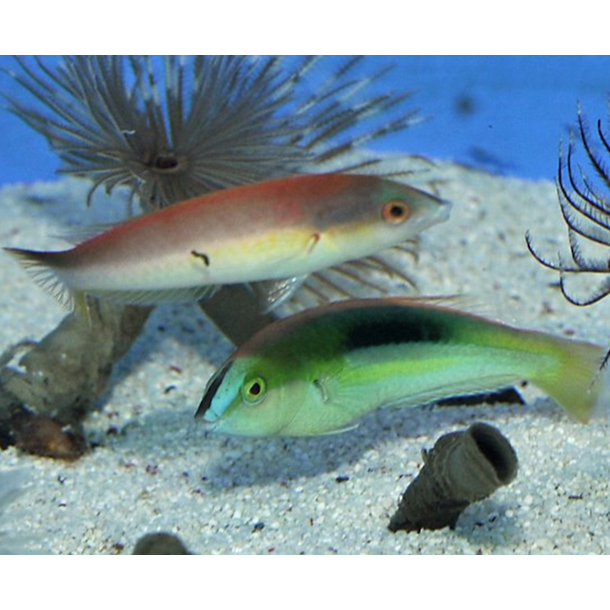Kaleidos Pencil Wrasse
You will earn 114 Points
The Kaleidos Pencil Wrasse boast a blue nose with green head while their top, or dorsal side is pink from above the eye to the tail. A dark band starts behind the green head to the tail where it fades out. The bottom half colour of the fish is variation of light teal to green in colour.
For best care, the Kaleidos Pencil Wrasse should be housed in an established, well-filtered aquarium. It is a jumper, so a secure lid on the aquarium is required.
The Kaleidos Pencil Wrasse may be very difficult to keep in an aquarium due to its feeding habits. When first introduced into the aquarium, live feeder brineshrimp or mysis shrimp should be used to entice this fish to eat. It eats very small invertebrates (amphiopods) that grow on live rock. The diet should also include live, small feeder shrimps (brine, mysid) and finely chopped marine meats.
